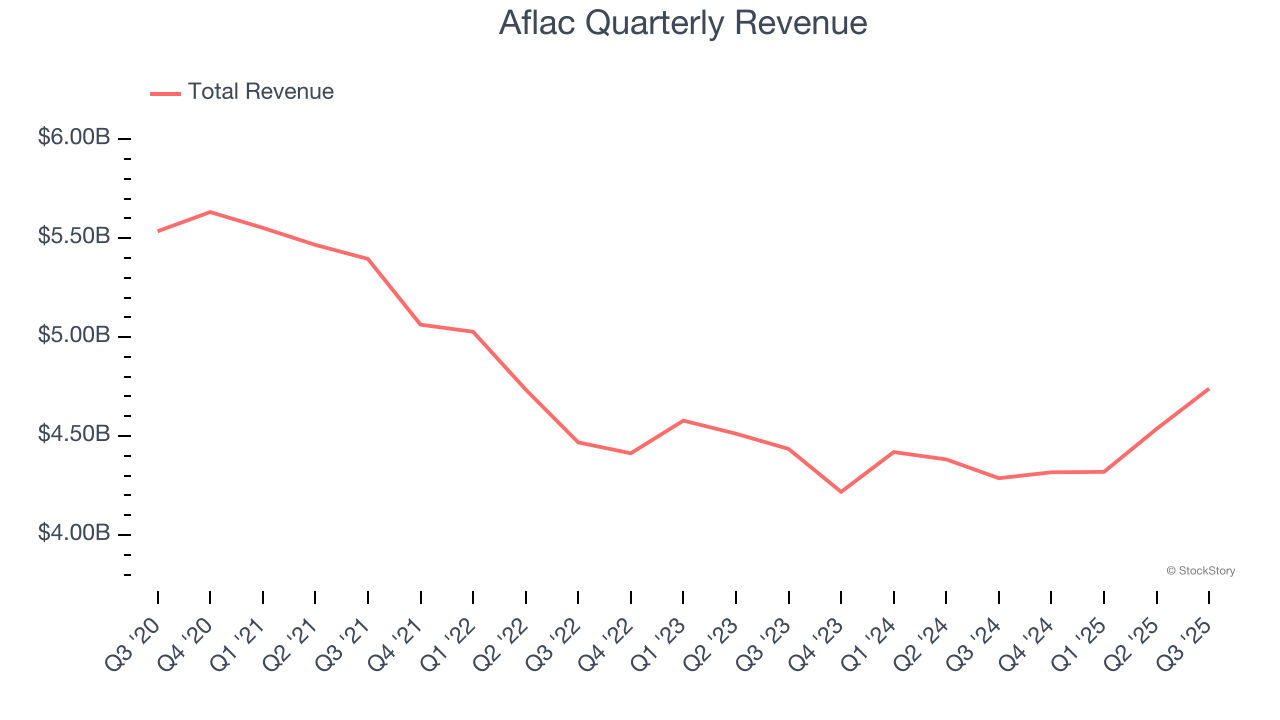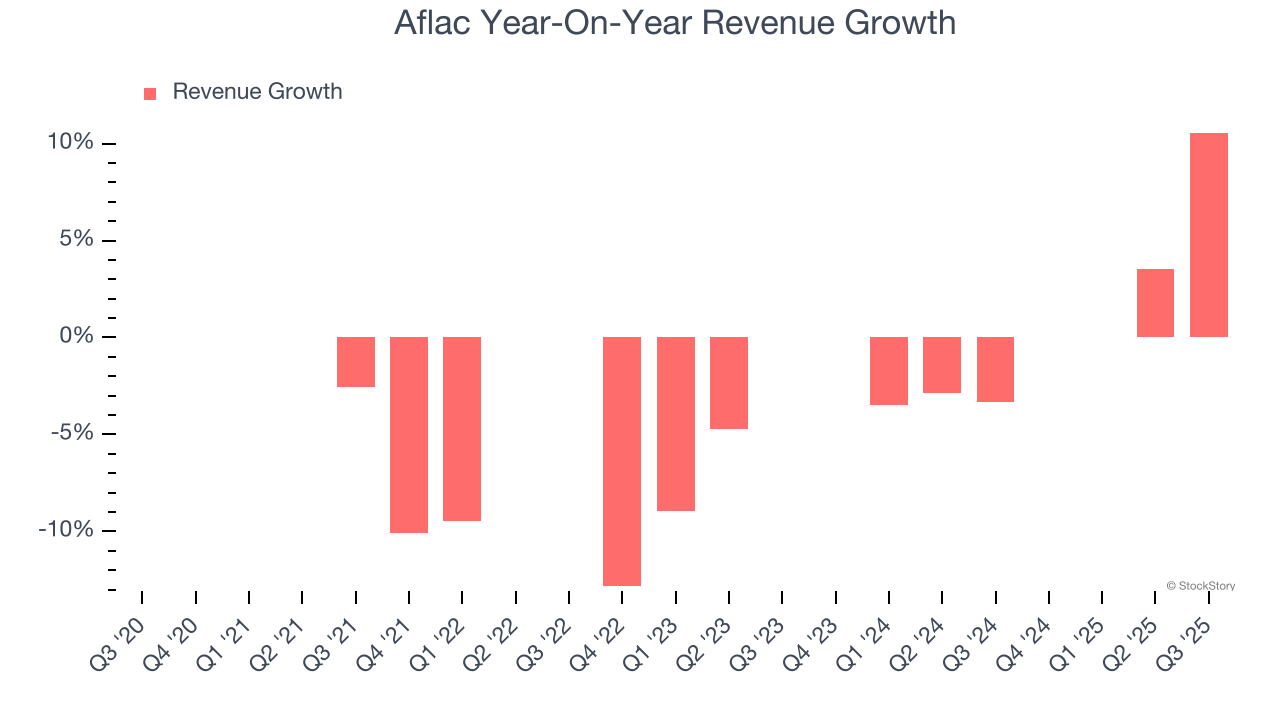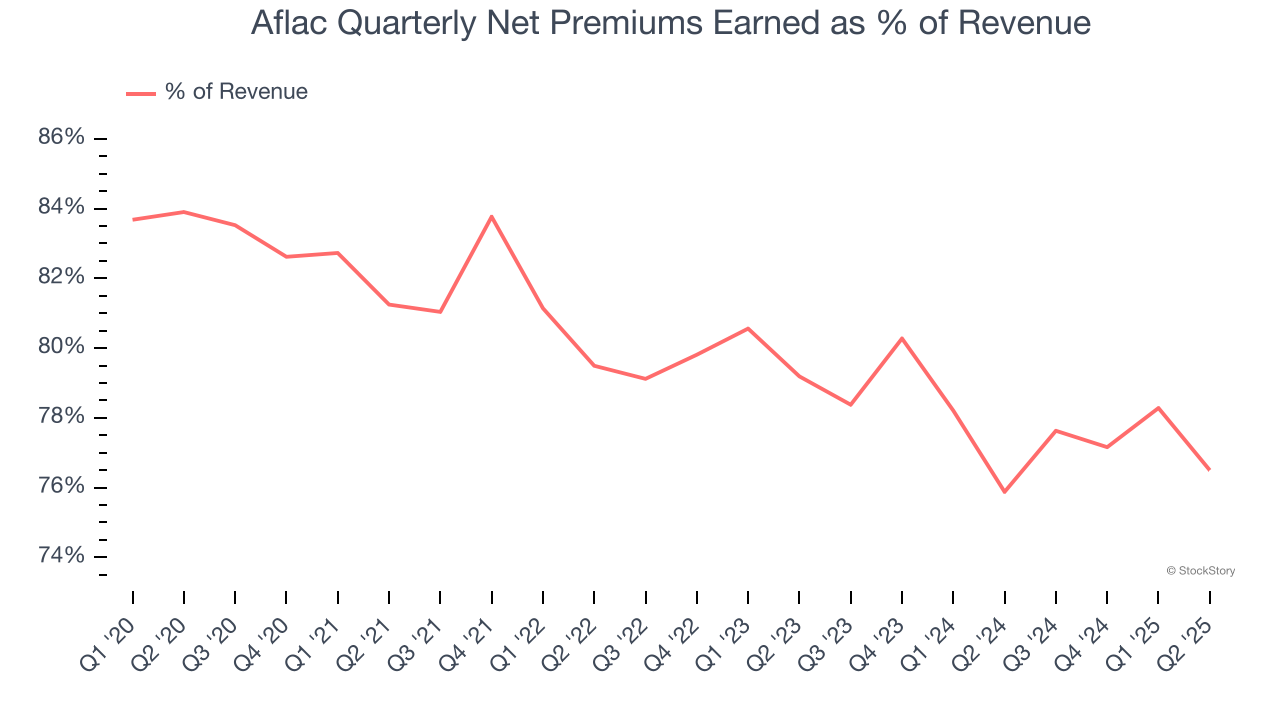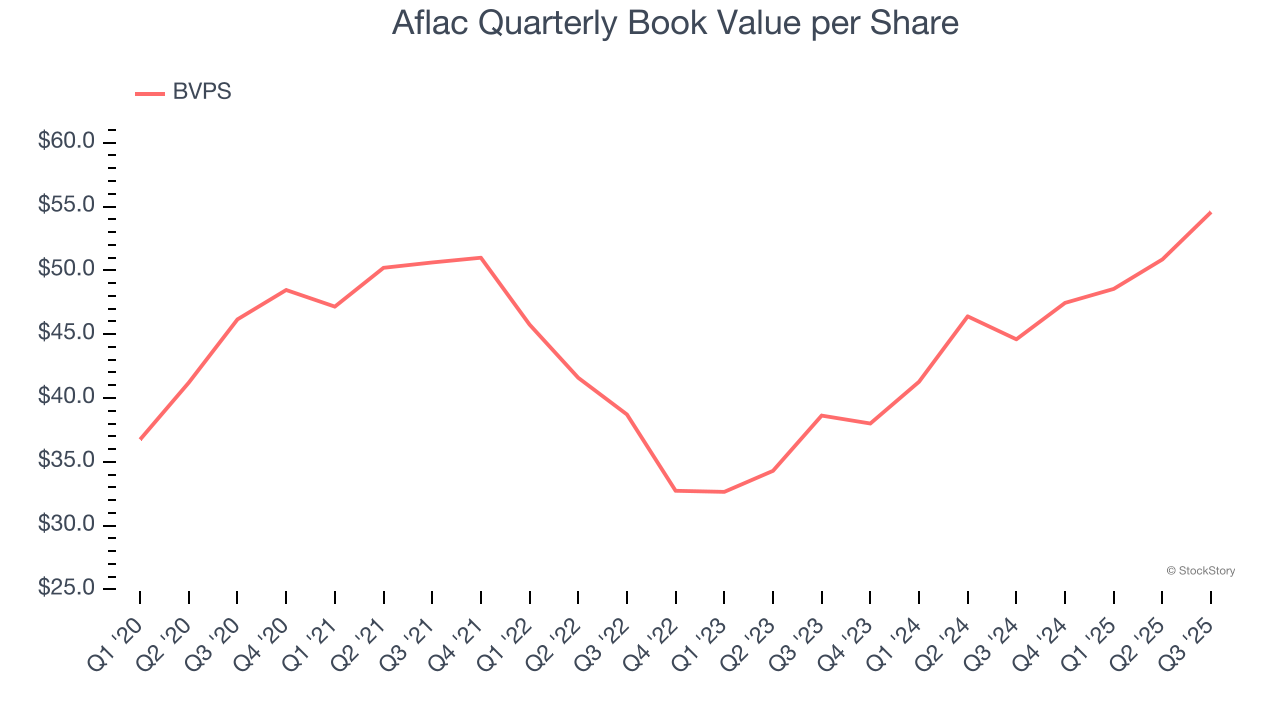
Supplemental insurance provider Aflac (NYSE: AFL) beat Wall Street’s revenue expectations in Q3 CY2025, with sales up 10.6% year on year to $4.74 billion. Its non-GAAP profit of $2.49 per share was 40.2% above analysts’ consensus estimates.
Is now the time to buy Aflac? Find out by accessing our full research report, it’s free for active Edge members.
Aflac (AFL) Q3 CY2025 Highlights:
Commenting on the company's results, Aflac Incorporated Chairman and Chief Executive Officer Daniel P. Amos stated: "Aflac delivered very solid earnings for the quarter and the first nine months. These results reflect our focused efforts to execute on our strategy of creating long-term value for shareholders.
Company Overview
Known for its iconic duck mascot that has quacked "Aflac!" in commercials since 2000, Aflac (NYSE: AFL) provides supplemental health and life insurance policies that pay cash benefits directly to policyholders for expenses not covered by their primary insurance.
Revenue Growth
Insurers earn revenue three ways. The core insurance business itself, often called underwriting and represented in the income statement as premiums earned, is one way. Investment income from investing the “float” (premiums collected upfront not yet paid out as claims) in assets such as fixed-income assets and equities is the second way. Fees from various sources such as policy administration, annuities, or other value-added services is the third. Aflac’s demand was weak over the last five years as its revenue fell at a 4.2% annual rate. This was below our standards and suggests it’s a low quality business.

We at StockStory place the most emphasis on long-term growth, but within financials, a half-decade historical view may miss recent interest rate changes, market returns, and industry trends. Aflac’s revenue over the last two years was flat, sugggesting its demand was weak but stabilized after its initial drop.  Note: Quarters not shown were determined to be outliers, impacted by outsized investment gains/losses that are not indicative of the recurring fundamentals of the business.
Note: Quarters not shown were determined to be outliers, impacted by outsized investment gains/losses that are not indicative of the recurring fundamentals of the business.
This quarter, Aflac reported year-on-year revenue growth of 10.6%, and its $4.74 billion of revenue exceeded Wall Street’s estimates by 6.6%.
Net premiums earned made up 79.8% of the company’s total revenue during the last five years, meaning insurance operations are Aflac’s largest source of revenue.

Our experience and research show the market cares primarily about an insurer’s net premiums earned growth as investment and fee income are considered more susceptible to market volatility and economic cycles.
While Wall Street chases Nvidia at all-time highs, an under-the-radar semiconductor supplier is dominating a critical AI component these giants can’t build without. Click here to access our free report one of our favorites growth stories.
Book Value Per Share (BVPS)
Insurance companies are balance sheet businesses, collecting premiums upfront and paying out claims over time. The float – premiums collected but not yet paid out – are invested, creating an asset base supported by a liability structure. Book value captures this dynamic by measuring:
- Assets (investment portfolio, cash, reinsurance recoverables) - liabilities (claim reserves, debt, future policy benefits)
BVPS is essentially the residual value for shareholders.
We therefore consider BVPS very important to track for insurers and a metric that sheds light on business quality. While other (and more commonly known) per-share metrics like EPS can sometimes be lumpy due to reserve releases or one-time items and can be managed or skewed while still following accounting rules, BVPS reflects long-term capital growth and is harder to manipulate.
Aflac’s BVPS grew at a sluggish 3.4% annual clip over the last five years. However, BVPS growth has accelerated recently, growing by 18.9% annually over the last two years from $38.63 to $54.57 per share.

Over the next 12 months, Consensus estimates call for Aflac’s BVPS to shrink by 1.9% to $50.55, a sour projection.
Key Takeaways from Aflac’s Q3 Results
We were impressed by how significantly Aflac blew past analysts’ book value per share expectations this quarter. We were also glad its EPS outperformed Wall Street’s estimates. Zooming out, we think this was a solid print. The stock traded up 2.7% to $111.70 immediately after reporting.
Aflac put up rock-solid earnings, but one quarter doesn’t necessarily make the stock a buy. Let’s see if this is a good investment. We think that the latest quarter is only one piece of the longer-term business quality puzzle. Quality, when combined with valuation, can help determine if the stock is a buy. We cover that in our actionable full research report which you can read here, it’s free for active Edge members.






